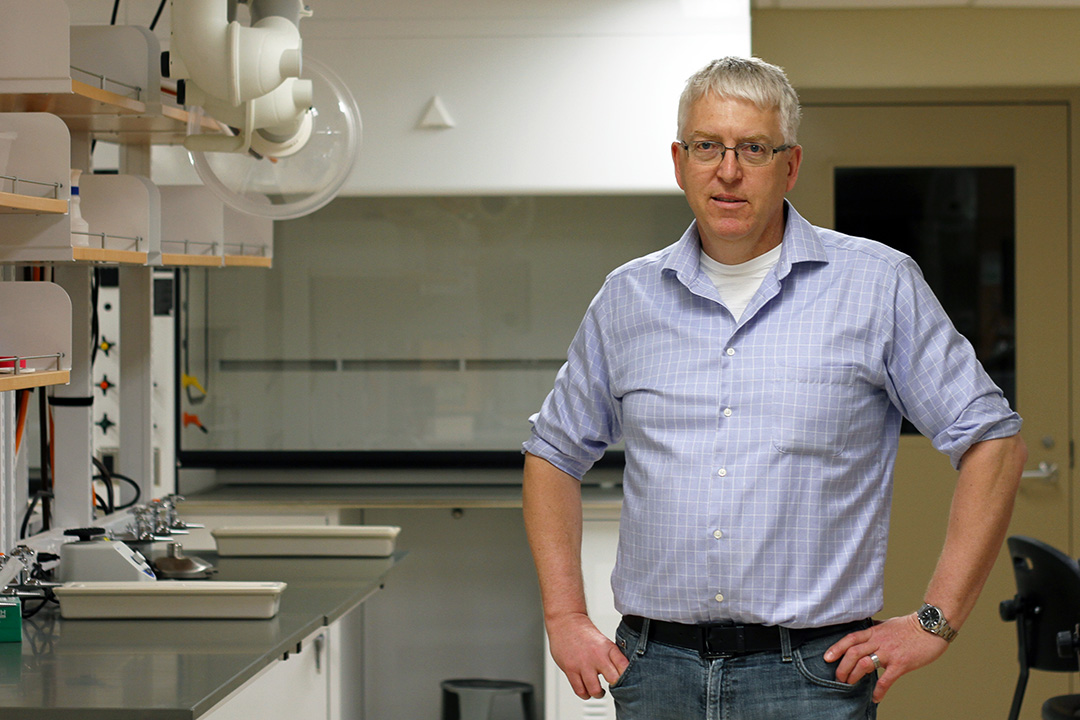
Microbiologist refocuses research on the practice of teaching
Faculty across the University of Saskatchewan (USask) are working together to publish research on teaching.
By Meghan SiredOnce Dr. Harold Bull (PhD), a professor in the College of Medicine, started researching about teaching practices, he said his whole worldview on teaching changed.
Bull paid closer attention to his approach to teaching and made adjustments based on what he was learning. He said one of the biggest changes he made was to not focus as much on specific content and covering “everything,” but rather focus on student learning of what is covered.
“In my fourth-year molecular genetics class, I used to make sure students knew the latest concepts of molecular genetics, but I realized what is current today will likely not be relevant in five or so years,” said Bull. “What will always be relevant are the skills involved in thinking about and analyzing concepts. So now I focus on teaching fewer concepts, but in a way that will allow my students to apply what they learned when thinking about future problems.”
Bull is a member of one of the scholarship of teaching and learning (SoTL) clusters at USask. Their BioMeducation cluster was the first one formed just prior to the project launch back in 2016 and was granted funding by the Gwenna Moss Centre for Teaching and Learning.
Wendy James, manager of professional and curriculum development at the Gwenna Moss centre, said clusters are faculty-led groups that have received up to $5,000 per year for two years. The clusters are invited to writing retreats and receive support from a SoTL coach and a library liaison.
“You may have had a wonder for a while or a niggling kind of concern or thought, or you’ve tried to innovate in some way in your classroom and you’re wondering if the change has made a difference. SoTL answers those questions for you,” said James. “Clusters provide the support you need when trying this type of research for the first time.”
The cluster Bull is part of includes six faculty members from the College of Medicine, three are new to SoTL and the others have PhDs in medical education. The team chose a few different research projects to work on together, including one that measures the effectiveness of introducing an active learning component—specifically a poster project assignment—to a second-year BMSC 210 (Microbiology) class. Currently, Bull and his co-author from their SoTL cluster have an article under revision that details the results of the study.
“Most of my department isn’t involved in SoTL, and so I appreciate having the opportunity to meet with my cluster to get support and to keep me on track with my research,” said Bull. “Being part of a cluster keeps SoTL a priority for me.”
James and Bull both agree it can be daunting to enter the world of SoTL, but James wants faculty to know there is a set of interdisciplinary supports that will get them over the hurdle of starting the process, including SoTL clusters, grants and one-on-one consults with library and Gwenna Moss centre staff.
“Faculty can often feel like research and teaching are competing priorities,” said James. “It’s difficult to find the time to be as inquiring as they would like to be about both, and SoTL provides that happy intersection in the middle of the Venn diagram.”
Bull is an experienced microbiologist, and said that in some ways his work in that area prepared him for his work in SoTL, since he knows what excellence looks like and how to make a logical argument.
He said the differences likely outweigh the similarities though—the language, concepts and journals are all different and his journal submissions are in competition with the work of experienced SoTL scholars.
“It’s very much like being a starting graduate student again,” said Bull. “You have a desire to investigate a certain topic area, but are unsure as to what has already been covered and by extension what research questions will be useful additions to the field. The challenge is finding mentors who can help guide you and scaffold your development as your advisory committee and supervisor would do during your graduate work. The combination of SoTL cluster support and the resulting bringing together of likeminded faculty has provided both the support and the community to become a fledgling SoTL scholar.”
James said SoTL research is published in peer reviewed journals and is part of the faculty’s commitment to their position on campus. It addresses the pressure of doing sufficient research while also meeting educational goals.
“So, when you’re thinking about what’s worth researching, there’s always your discipline, but there’s also your instructional approach,” said James. “Particularly for those of us who have academic programming appointment positions where our primary role is teaching and our research job is supposed to be about our teaching, SoTL is your home and we’d love to have you.”
James said the Gwenna Moss centre plans to officially open the call for new cluster applications, which includes grant funding, at the May 2 SoTL conference From Teaching to Research Publication: The Fundamentals of doing SoTL. The Gwenna Moss Centre, in partnership with the Edwards School of Business and the College of Education, will host the conference at the USask Saskatoon campus. The event is free and lunch will be provided.

